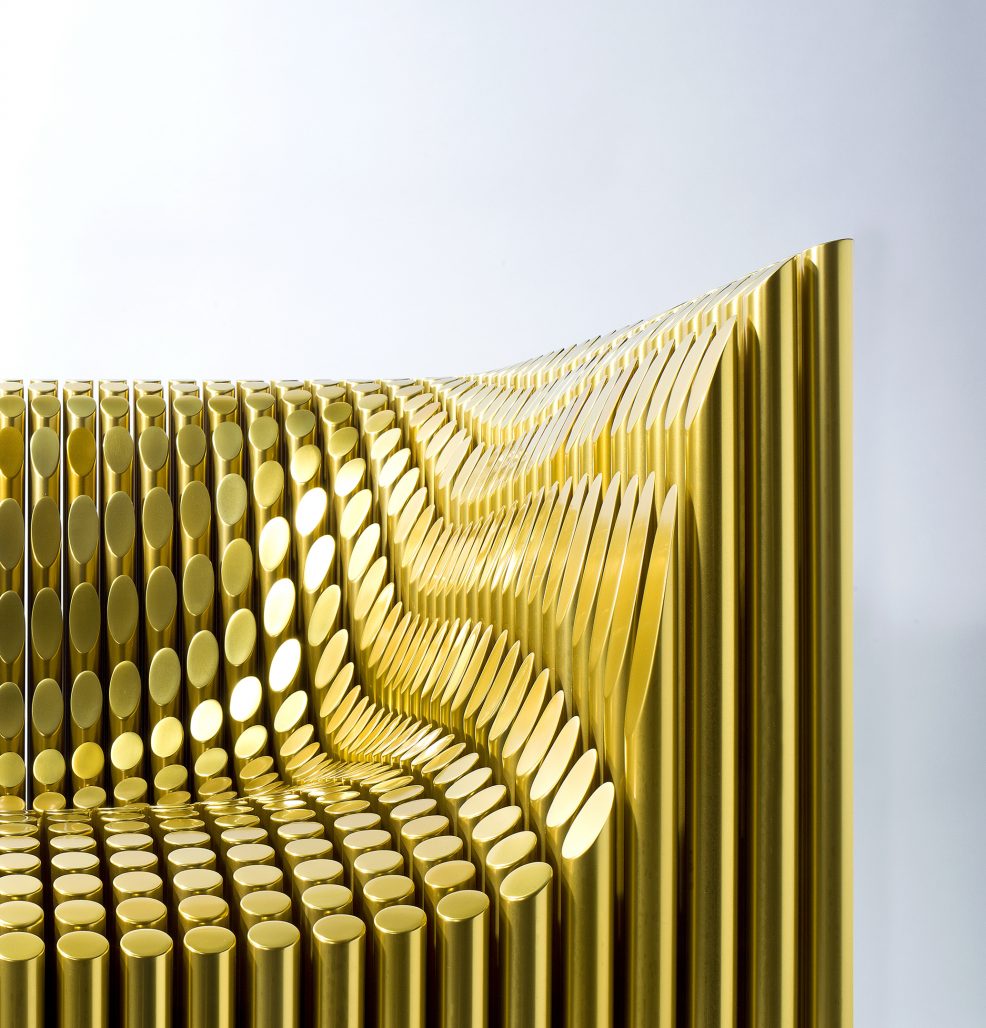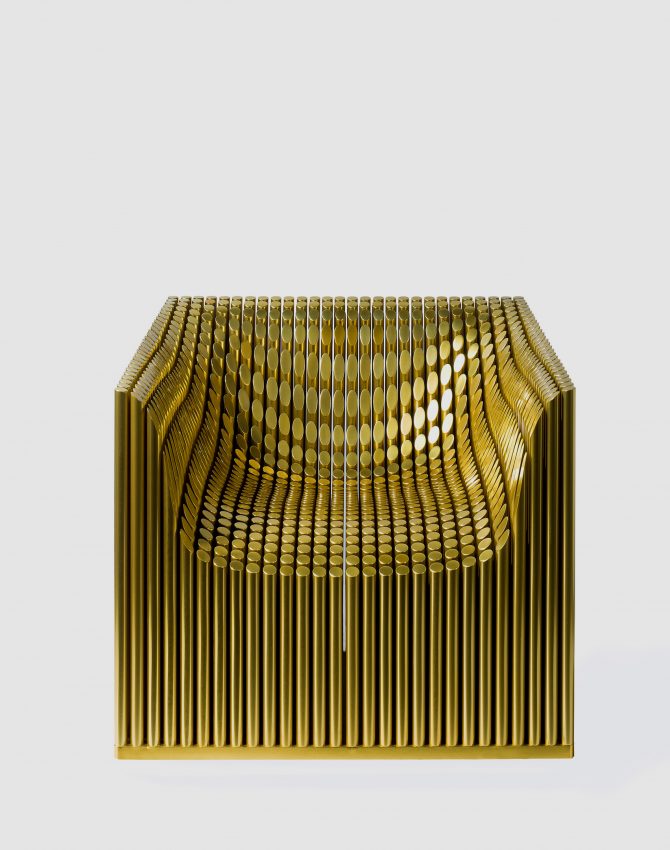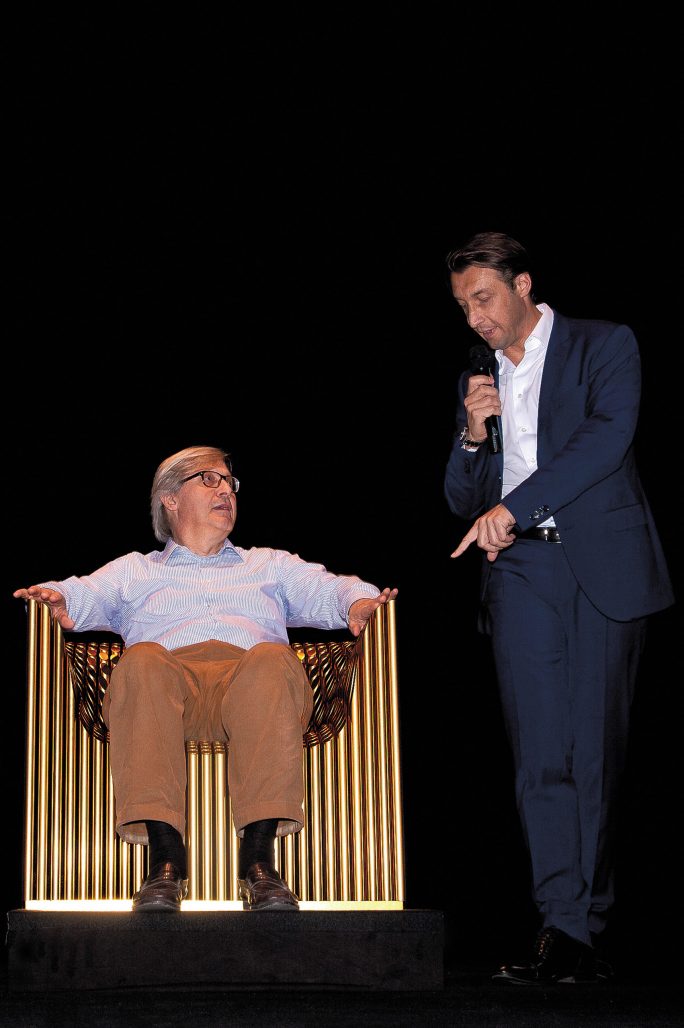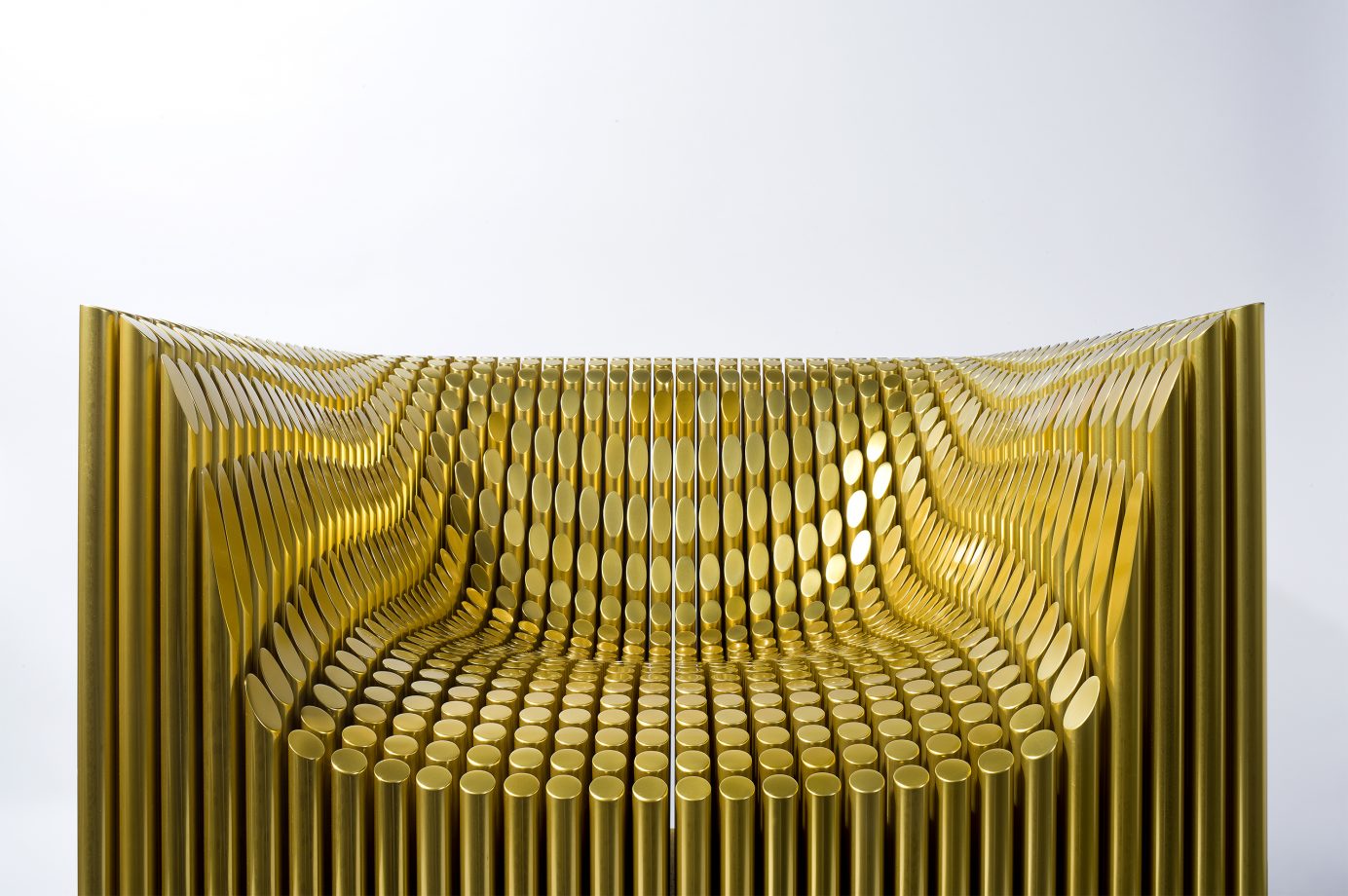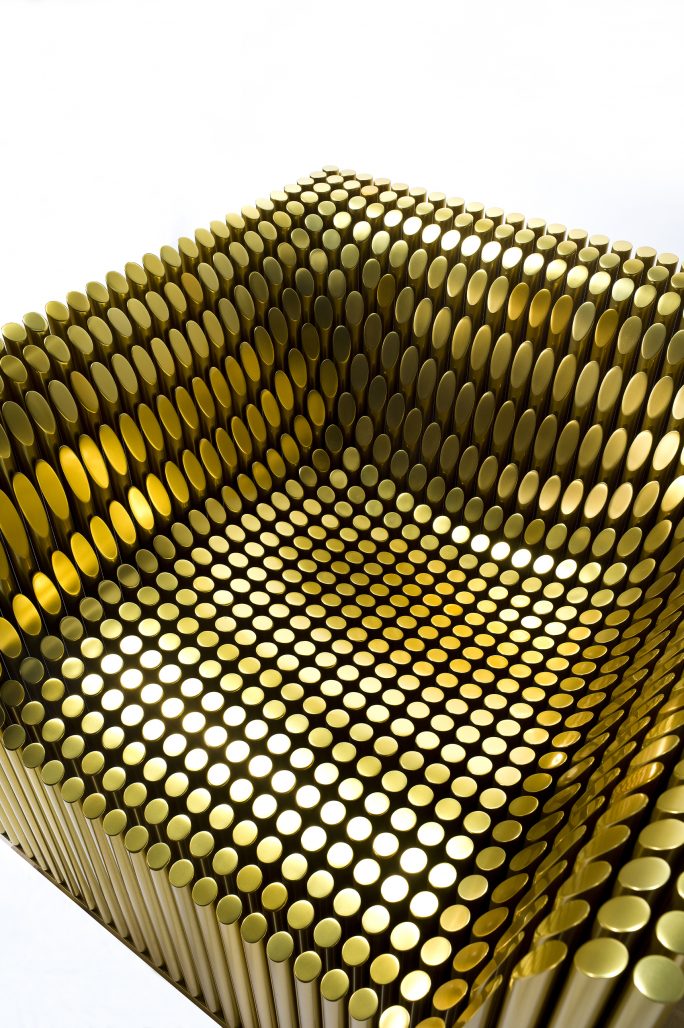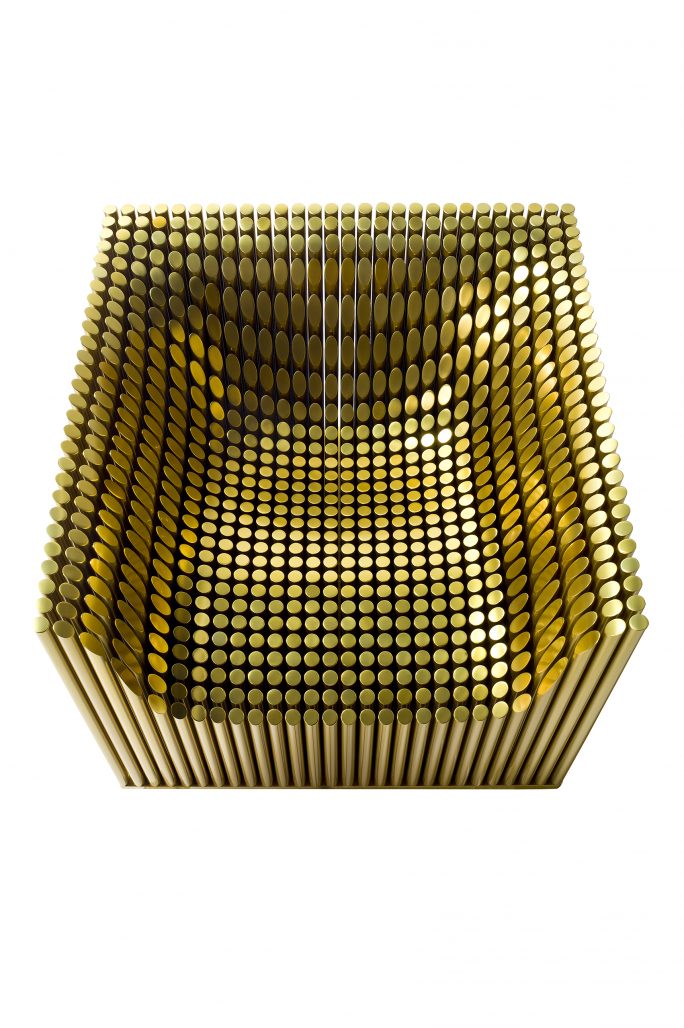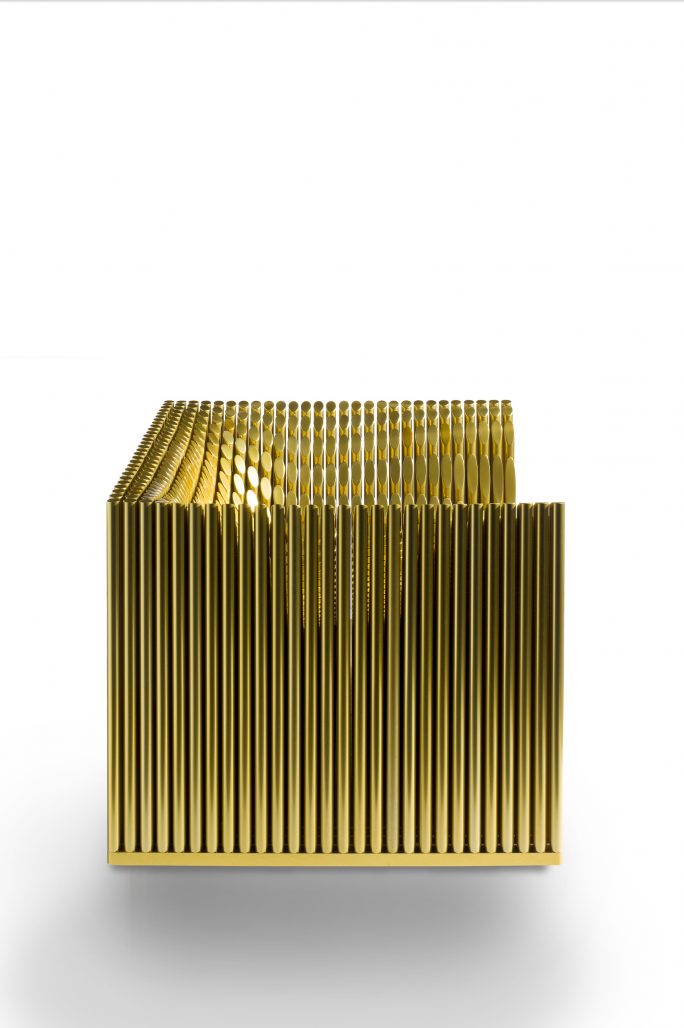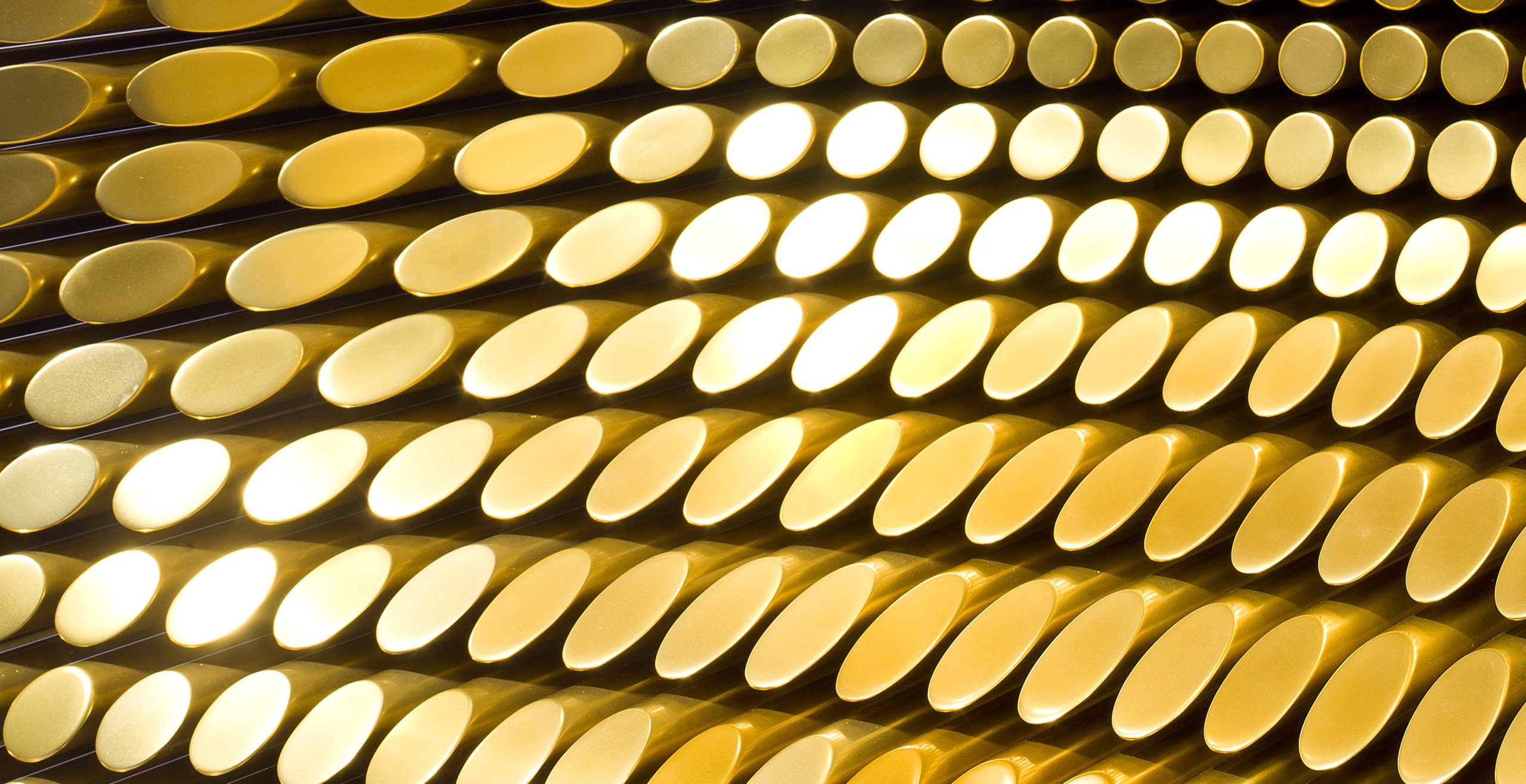
Setteottoquattro
784
“I was interested in getting out of the rut of industrial production and creating
something exclusive.”
The 784 is a contemporary throne made up of hundreds of gilded aluminum bars that make it as unique as a work of art.
Poised between design and art, this galvanized aluminum seat inevitably becomes the centerpiece of every setting.
Its gilding and massive presence evoke historic and exotic realms such as Egyptian and phantasmagoric environments that would have appealed to D’Annunzio or Mata Hari.

Carlo Colombo’s armchair is a monument without a man. A throne without a king. The architect does not hold himself back. He prepares the ceremony and the ceremonial.
And, if it is a baptism, the baptismal font too. What Giulio Cappellini says about him is a precise clue: “In the world of contemporary creativity, quite often leveled down by rigid market rules, Carlo is able to express himself without ever forgetting people’s real dreams and needs.”
How can dreams be more real than needs? Of course, sofas like Cap Ferrat and Cap Martin Sunset are apparently simple and flexible, to adapt to different and variable situations. They are not for the people: they are for the few and sensitive. The Milano 2015 lamp, in dialogue with FontanaArte, is a gelid form that renders the Carrara marble luminous and transfigures it, making it coincide with the light. The armchair, in its original function, awaiting a body, takes on feminine and masculine forms. With another technique and other intentions, Gaetano Pesce transformed it into the soft, passive female body itself. Colombo responds with his Eva, nervous, athletic, and reactive.
Whether it is a bathtub or a sofa, Colombo’s form is always rounded or concave, elastic or convex. Colombo is never passive. His form is always active and taut even when it alludes to comfort, as in the Jaipur bed, supported by macro wooden weaves: they are alert, nervous, edgy forms, like the Sushi armchair.
Colombo ennobles contemporaneity: he sees himself in the glowing washbasin with an elliptical outline, enlivened by LED lights; and light, not water, seems to be contained in Barrel, a pure, solid, and compact monolith with the soft curvature of a cask.
Colombo rehabilitates the simplest volumes, assigning them to their primary functions. Geometry and rigor are found in different objects: in the table lamp, as in the storage unit that is divided into variously modular blocks, to be composed depending on the requirements of space. For Arflex, as for Flexform with Alison, for interiors
and exteriors, Colombo conceives objects as engaged in guerrilla warfare with the prevailing need to furnish: hence Rugby, hence the competitive Urban. Colombo’s furnishings are like the buildings of an ideal city, which he calls contemporary Island, and it responds to the laws of a new city that I have called Sgarbistan, for
which Colombo has also conceived a throne, in a very limited edition.
He wanted to go beyond the scheme of the industrial revolution and create something unique and exclusive. The form of the body overspreads hundreds of gilded aluminum bars.
To the eye, it appears a golden throne, transforming and dominating every space. The throne awaits a king. And, in the same spirit, Colombo conceives the democratic chair for twenty ministers of a phantom government. Or for the G20 that has just ended. Fuksas’s Nuvola is matched by Colombo’s Ball. For the king and queen of a world of lobsters, far from unlikely, he has created the abnormal Lobsters. In each of these inventions, the design industry transfers its democratic origin into the aristocratic.
Colombo, in limited numbers, rehabilitates craft traditions. He is ready for a new world. Now he is waiting for men and women to populate it.
